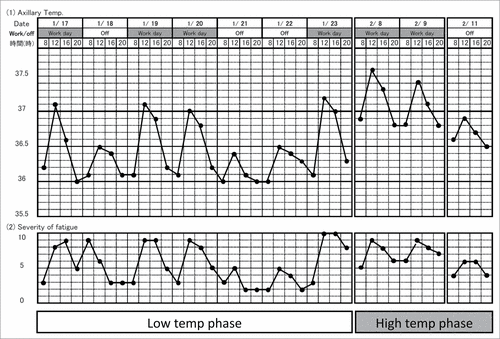Figures & data
Figure 1. Prominent psychogenic fever observed in a 15-year-old schoolgirl. She was referred from a pediatrician to my outpatient clinic because she repeatedly developed antipyretic drug-resistant fever of unknown causes. I asked the patient to record her axillary temperature (Ta) using an electrothermometer 4 times a day (8 a.m., 12 a.m., 4 p.m., and 8 p.m.) and the events of the day in a “fever diary” to better understand mind (stressor)-body (temperature) relationships. I also asked her mother and school nurse to make sure the temperature she recorded was accurate. The fever diary demonstrated that she developed a high Ta up to 39°C only on the days when she went to school (underlined black bar). (Unpublished observation.)

Figure 2. Chronic psychological stress-associated, persistent low-grade high axillary temperature (Ta) observed in a 56-year-old head nurse. She had antipyretic drug-resistant, low-grade (37–38°C) high Ta for more than 3 months. © Japanese Society of Psychosomatic Internal Medicine. Reproduced by permission of Japanese Society of Psychosomatic Internal Medicine. Permission to reuse must be obtained from the rightsholder.
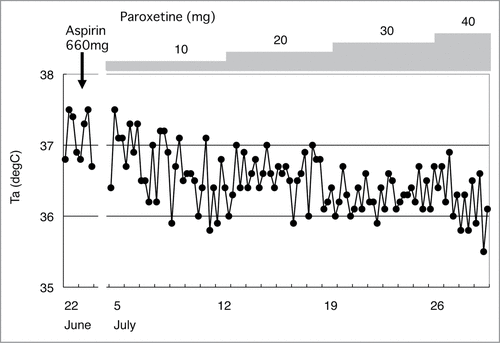
Figure 3. Effects of indomethacin (A), diazepam (B), and SR59230A (C), on social defeat stress-induced hyperthermia in rats. Rats received an intraperitoneal injection of indomethacin, a cyclooxygenase inhibitor (5 mg/kg), diazepam, an anxiolytic drug (4 mg/kg), SR59230A, a β3-adrenoceptor antagonist (5 mg/kg), or their respective vehicles at the time point indicated by arrows and were subsequently exposed to social defeat stress (Stress) or left undisturbed (Control) during the period indicated by the horizontal bars. © John Wiley and Sons. Reproduced by permission of John Wiley and Sons. Permission to reuse must be obtained from the rightsholder.
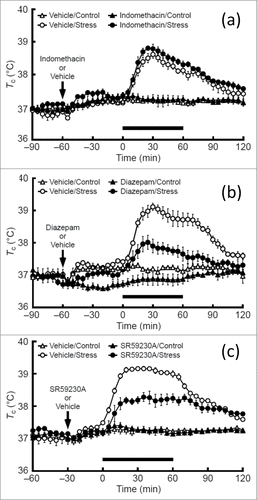
Figure 4. Possible mechanisms of psychological stress-induced hyperthermia in comparison with infectious fever. Infectious fever is induced by warmth-seeking behavior and shivering thermogenesis of the skeletal muscles, as well as sympathetic nerve-mediated non-shivering thermogenesis in brown adipose tissue and peripheral vasoconstriction. The HMS axis is known to mediate both sympathetic activation and shivering. In contrast, the brain region responsible for warmth-seeking behavior is currently unknown. Evidence suggests that neither the POA nor the DMH mediate warmth-seeking behavior.Citation129 Infectious/inflammatory fever is accompanied with elevated acute-phase proteins such as CRP and sickness behavior. By contrast, psychological stress increased Tc without accompanying sickness-related symptoms because it increases Tc via cytokines and PGE2-independant manner. So far, it is not known how psychological stress activates the DMH neurons to increase Tc or how the POA and other brain regions are involved in the psychological stress-induced hyperthermia. BAT, brown adipose tissue; CRP, C-reactive protein; DMH, dorsomedial hypothalamic nucleus; HMS, hypothalamic-medullary-sympathetic; IML, intermediolateral cell column; IL, interleukin; Mφ, macrophage; PG, prostaglandin; POA, preoptic area; rRPa, rostral raphe pallidus nucleus; Tc, core body temperature. Reprinted from Advances in Neuroimmune Biology, Vol 3, Oka T, Oka K, Mechanisms of psychogenic fever, Pages 3-17. © IOS Press. Reproduced by permission of IOS Press. Permission to reuse must be obtained from the rightsholder.
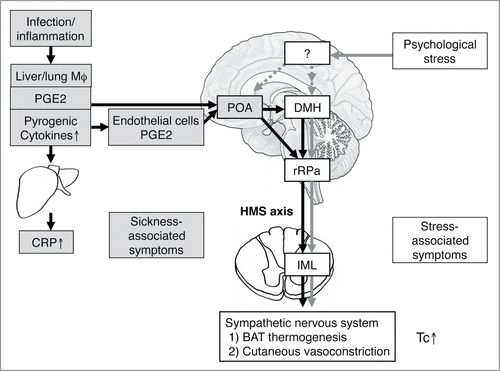
Figure 5. Possible mechanisms for enhanced psychological stress-induced hyperthermic response in chronically stressed rats. BAT, brown adipose tissue; SNS, sympathetic nervous system; Tc, core body temperature, UCP1, Uncoupling protein 1.

Figure 6. Effects of stress interview on core and peripheral temperatures in a 26-year-old CFS patient. Changes in axillary (armpit) and tympanic membrane (tym.) temperatures (A) and fingertip temperature (B) during and after a 60-minute stress interview. Stress interview was conducted for one hour (0 min – 60 min). © BioMed Central. Reproduced by permission of BioMed Central. Permission to reuse must be obtained from the rightsholder.
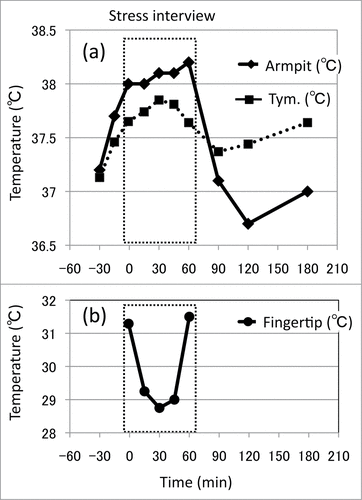
Figure 7. Inhibitory effects of tandospirone, a 5-HT1A receptor agonist, on the axillary temperature (Ta) and severity of fatigue in a 30-year-old woman with psychogenic fever. Vertical lines show axillary temperature (black line) and fatigue level (dotted line, with numerical rating scale in which 10 represents the most severe fatigue imaginable and 0 represents none). (A) Before the treatment (August 5th), (B) After tandospirone treatment Sep. 9th, and (C) After tandospirone treatment Sep. 18th. The patient started to take tandospirone, a 5-HT1A agonist, 30 mg from Sep. 2nd and 60 mg from Sep. 9th. © Japanese Society of Psychosomatic Internal Medicine. Permission to reuse must be obtained from the rightsholder. Before the treatment, as her Ta induced 0.5°C increased from 36.8°C to 37.3°C, her fatigue level increased remarkably from 4 to 9. She asked for the treatment of her low-grade fever hypochondriacally (A). However, after the treatment with tandospirone, she became less concerned about her low-grade fever, when although her Ta increased from 36.8°C to 37.3°C, her fatigue level increased from just 1 to 2 (B). Her Ta did not exceed 37°C (C).
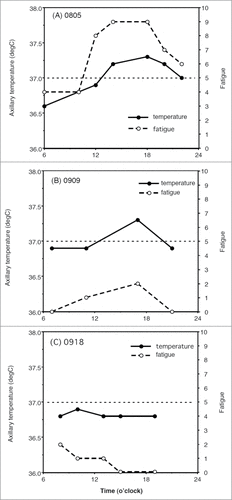
Figure 8. Fever and fatigue chart recorded by a 24-year-old patient with chronic fatigue syndrome and fibromyalgia syndrome. She worked as a telephone operator, a sedentary job. This chart tells that her axillary temperature is higher on the workday than on a day-off, showing that “workday hyperthermia” and the increase in axillary temperature is associated with increased fatigue. Reprinted from Advances in Neuroimmune Biology, Vol 4, Oka T, Influence of psychological stress on chronic fatigue syndrome, Pages 301-9. © IOS Press. Reproduced by permission of IOS Press. Permission to reuse must be obtained from the rightsholder.
